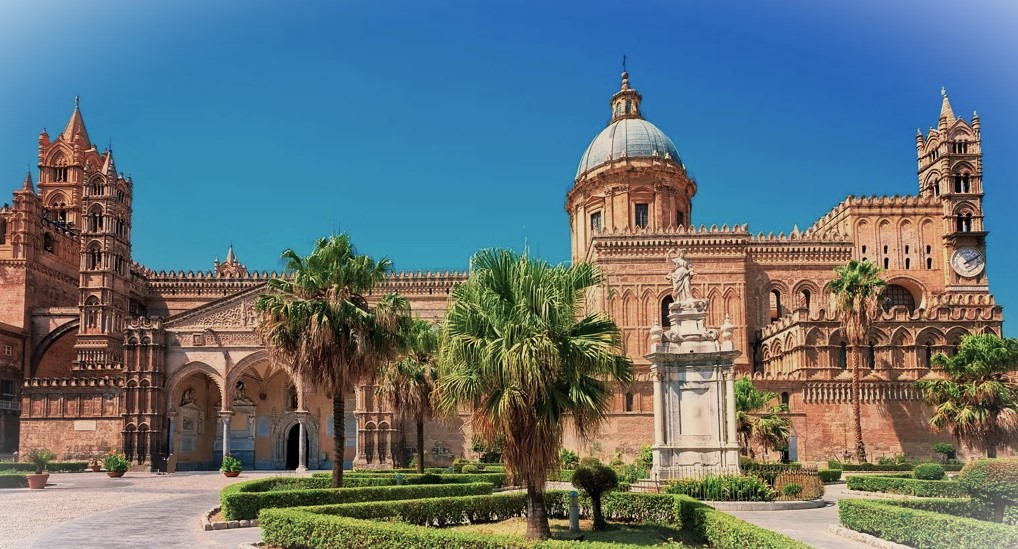From Bagheria the walk continues to and ends in Palermo, the capital of Sicily.
Palermo (or Palermu in Sicilian dialect) is almost 3000 years old as a regional capital and, as the capital of Sicily it is very rich is history and culture. Having first served as a Punic, Roman and Byzantine capital, it later served as the capital of the Arab Imārat Ṣiqilliya, as part of the caliphates spanning Europe, North Africa, the Middle East and Western Asia collectively known as Dar al Isam. It was also subsequently the capital of Siculo-Norman rule and the then newly founded Kingdom of Sicily and, later, seat of the Viceroy for Aragon and, subsequently, Spain. With wealth of history comes culture, architecture and gastronomy.
The city was founded in 734 BC by the Phoenicians as Sus (“flower”). Palermo then became a possession of Carthage. Two Greek colonies were established, known collectively as Panormos; the Carthaginians used this name on their coins after the 5th century BC. As Panormus, the town became part of the Roman Republic and Empire for over a thousand years. From 831 to 1072 the city was under Arab rule in the Emirate of Sicily when the city became the capital of Sicily for the first time. After the Norman conquest, Palermo became the capital of a new kingdom, the Kingdom of Sicily, that lasted from 1130 to 1816.
Worth seeing is the Cathedral of Palermo which, together with that of Cefalu’ and Monreale are UNESCO Heritage sites. Another must-see is the Siculo-Norman palace and the Palatina.
Palermo ends the Sicilian segment of the Camino Maltes. The next stage is the ferry crossing from Palermo to Cagliari.
